Learn how to make the most delicious Sauerkraut ever with this simple recipe! This homemade sauerkraut recipe is packed with flavor and is incredibly easy to make. With just three simple ingredients, cabbage, carrots, and sea salt, you’ll be able to make the most delicious one you’ve ever had! Plus, it’s full of probiotics and great for you!
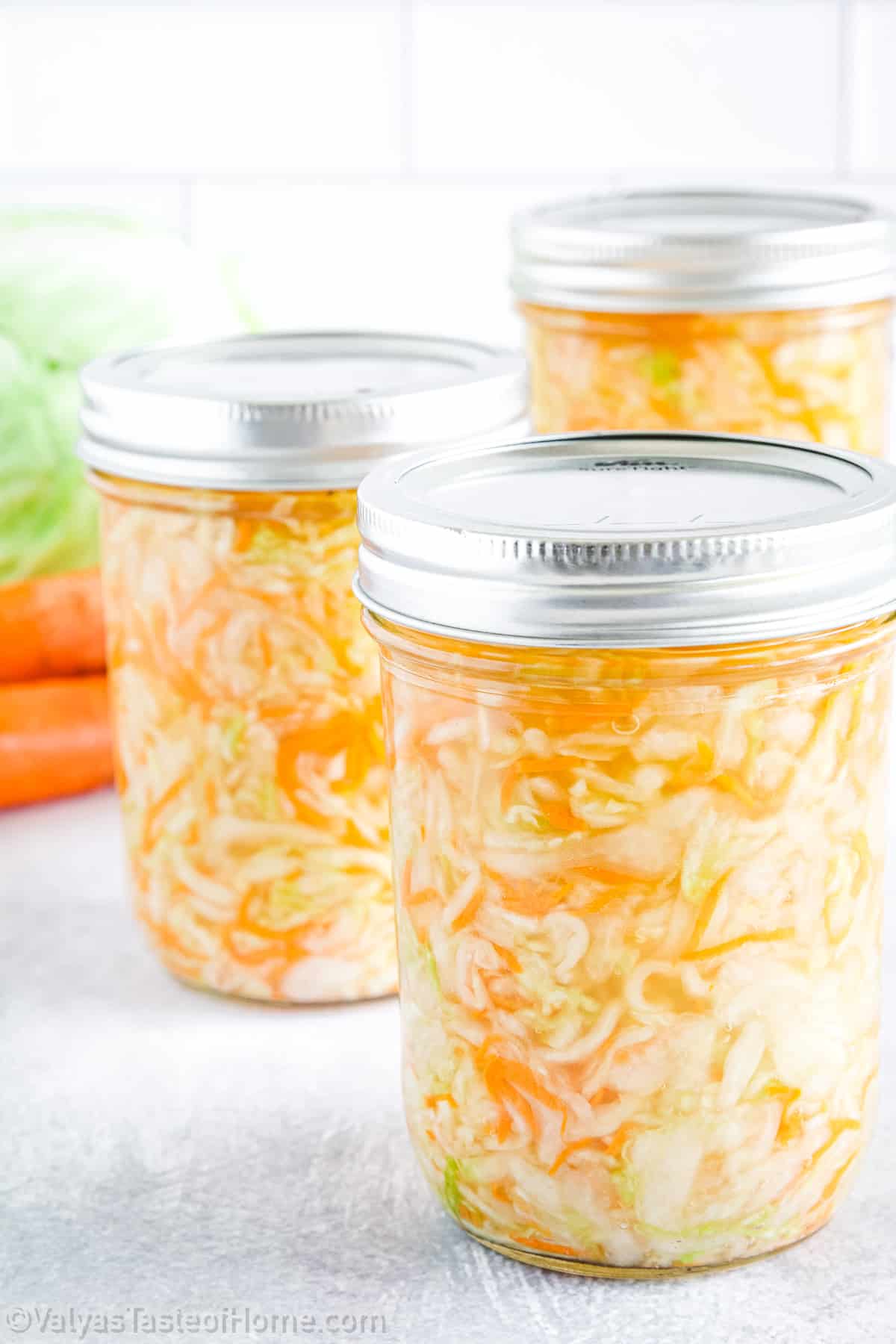
Sauerkraut is a naturally fermented food rich in probiotics, fiber, and vitamin C. Made by shredding cabbage and carrots and adding just the right amount of salt, this dish is set to ferment, releasing its juices and creating a flavorful brine. Not only is it a delicious side dish, but it’s also an excellent way to add a healthy dose of vegetables to your daily diet.
I've been making this recipe for as long as I remember. Growing up, I remember my grandmother making many batches of this sauerkraut at once and packing it into a wooden barrel.
It’s one of the stock-piled food items stored in advance to last throughout the winter and spring. It requires only three ingredients and so simple to make.
Then all you need is to patiently wait for about a week for time to create this delicious homemade sauerkraut for you.
What makes this sauerkraut recipe unique is the addition of shredded carrots, adding a delightful sweetness to the tangy kraut. Plus, the recipe makes several batches, which you can pack into mason jars and store for months.
So why not give it a go? Within a week, you’ll be able to enjoy this homemade sauerkraut, bursting with flavor and nutritional benefits
Want to learn how to make this sauerkraut recipe? Then keep on reading.
Table of Contents
- What is Sauerkraut?
- What Makes This Sauerkraut Recipe Special?
- What You Need to Make Sauerkraut at Home
- How to Make Sauerkraut (Step-by-Step)
- Tips for Making the Best Sauerkraut Ever
- Serving Suggestions for Sauerkraut
- Recipe Variation Ideas for Sauerkraut
- Frequently Asked Questions
- How to Store Leftover Sauerkraut
- Recipe Card
- How to Make Sauerkraut at Home (Easy and Full of Probiotics)
- Comments
What is Sauerkraut?
Sauerkraut is a type of fermented food, widely loved for its tangy flavor and various health benefits. It is made from shredded cabbage that has been left to ferment, typically in a brine of its own juices and sea salt.
This homemade kraut recipe, in particular, also combines carrots, adding a touch of sweetness to balance out the tangy flavor of the fermented cabbage.
What’s best is that this sauerkraut recipe is ready to have after a week, and it can be enjoyed in several ways. It can be served as a salad or used as a primary ingredient in sauerkraut borscht, also known as kapusnyak.
Enjoy the process of preparing this homemade kraut and savor its unique flavor and numerous health benefits. You’re going to love it!
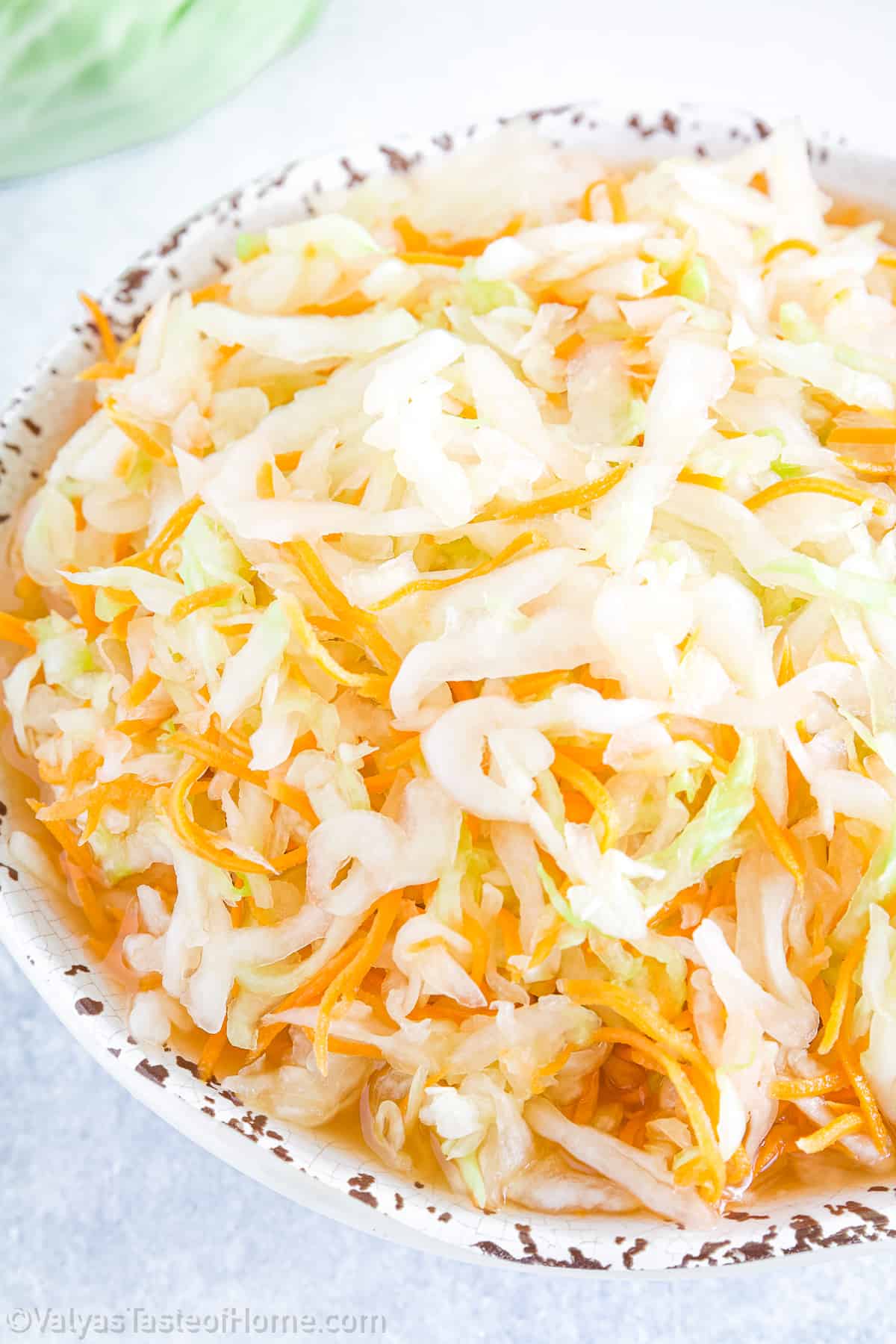
What Makes This Sauerkraut Recipe Special?
Easy to make: This sauerkraut recipe only requires three simple ingredients: cabbage, carrots, and salt. The process is incredibly simple - just shred the vegetables, mix in the salt, and let time do the rest. It is a simple process that anyone can follow, even if they’re new to homemade fermented foods.
Versatile: The base recipe is delicious on its own, but you can easily customize it to your liking by adding ingredients such as garlic, caraway seeds, or juniper berries. This allows you to create your own unique flavor profiles, making the recipe versatile and adaptable to your personal preferences.
Delicious: The flavor of this homemade kraut is incomparable. The process of fermentation enhances the natural flavors of the cabbage and carrots, creating a tangy, savory treat that is delicious on its own or as a topping for other dishes.
Crowd pleaser: This recipe is a guaranteed crowd-pleaser, a testament to its deliciousness. Whether you’re serving it at a family gathering, a potluck, or just to your immediate family, it is sure to be a hit. Plus, by making it yourself, you can be sure of the quality ingredients and care that went into preparing it.
Healthier option: Homemade sauerkraut is full of probiotics since it's a type of fermented food. These beneficial bacteria are great for gut health, and the cabbage itself is a good source of fiber and vitamin C. So not only is this sauerkraut recipe delicious, it is also a healthier alternative to store-bought versions.
What You Need to Make Sauerkraut at Home
All you need are some simple pantry staple ingredients to make this sauerkraut recipe at home. Let's look at them in more detail:
Cabbage: We will need a couple of medium-sized heads of cabbage to make this recipe. The cabbage, once shredded, becomes the primary ingredient of our homemade sauerkraut, providing a hearty texture and serving as the basis for the fermentation process.
Carrots: We will also need some large carrots. The carrots will add a touch of sweetness and color to the sauerkraut, enhancing its overall flavor and visual appeal.
Salt: We will be adding some salt to make this recipe. The salt, preferably sea salt, will draw out the juices from the shredded cabbage, creating the brine in which the cabbage ferments. This process is essential for achieving the tangy flavor of the sauerkraut and preserving the vegetables.
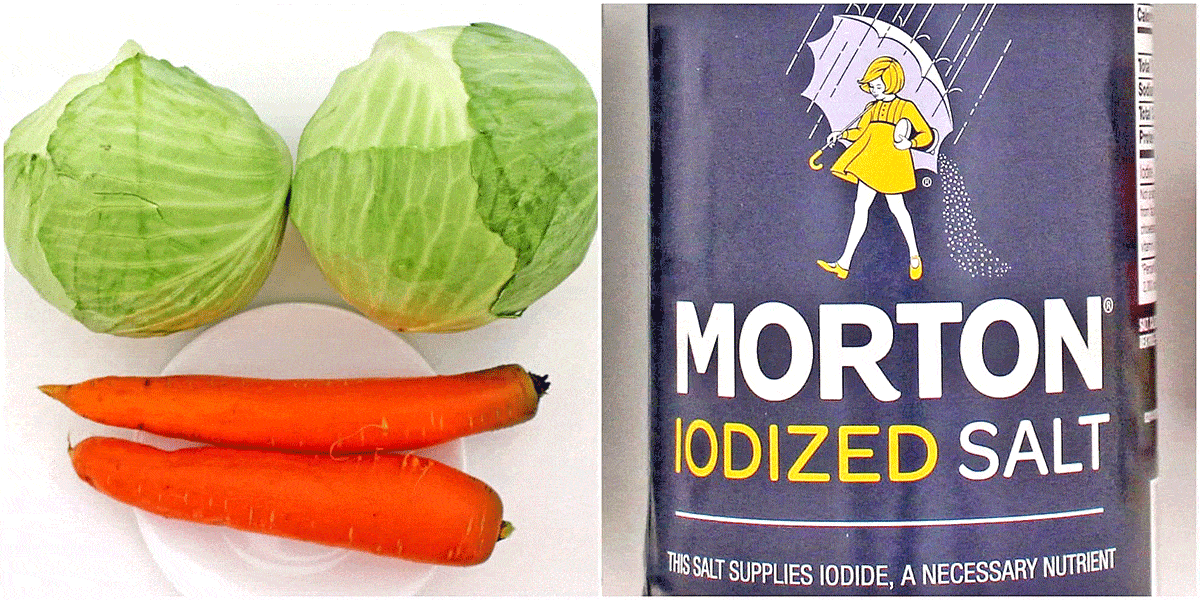
How to Make Sauerkraut (Step-by-Step)
Making this incredible kraut is easier than you think. Here's how to make them at home step by step:
How to Prep Veggies
Begin by peeling the outer leaves from the green cabbage and setting them aside. These leaves can be used later in the fermentation process to create an oxygen-free environment.
Next, peel your carrots using a standard potato or vegetable peeler. It is essential to wash all your vegetables thoroughly to remove any dirt or foreign particles.
Cut the head of your cabbage in half. Using a shredder or a sharp knife, shred the cabbage into thin slices. Shredding increases the surface area of the cabbage, allowing the brine to penetrate more efficiently.
Similarly, shred the carrots and add them to the bowl containing the shredded cabbage. The carrots add a pleasant sweetness to the sauerkraut and contribute to its overall flavor.
How to Make Sauerkraut
Sprinkle the appropriate amount of sea salt onto your cabbage and carrot mixture. Sea salt acts as a preservative and kickstarts the fermentation process. It is important to toss the mixture well, to make sure that salt is evenly distributed. Massage the salt in using your hands, the end of a wooden spoon, or a kraut pounder.
This step is crucial in creating the brine in which your kraut will ferment. Squeeze the vegetables together until the cabbage becomes limp and begins to release its juices.
Transfer your sauerkraut into a bowl or crock that has a lid that seals tightly. Alternatively, you could use mason jars. Thoroughly pack them down with a wooden spoon. The goal is to eliminate as many air bubbles as possible.
Let the sauerkraut sit on your countertop for approximately 24 hours. This allows the flavors to meld together and fermentation to begin. Your sauerkraut should ferment in an anaerobic environment that allows carbon dioxide to escape without letting oxygen in. An airlock or fermentation crock is useful as well.
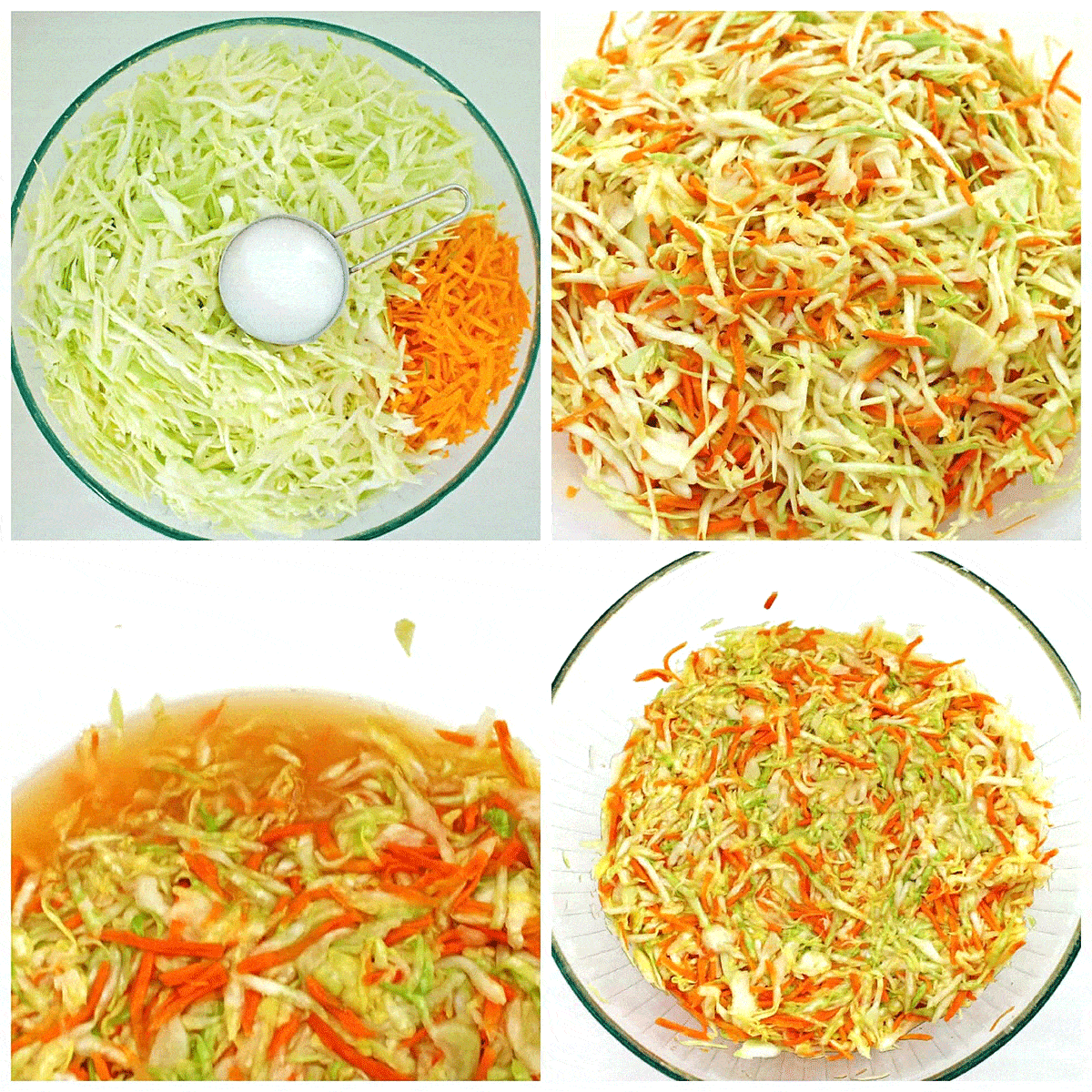
How to Refrigerate Sauerkraut
After the initial fermentation period, move your kraut to the refrigerator. Here, it should sit for 3-4 days. The cool temperature slows the fermentation process, allowing the flavors to develop further.
Remove the sauerkraut from the refrigerator and pack it into jars. Make sure that the brine covers the cabbage to prevent mold.
Close the jars tightly with lids and store them in the refrigerator. Your sauerkraut is safe to consume after just one week, but the flavor will continue to develop over several months.
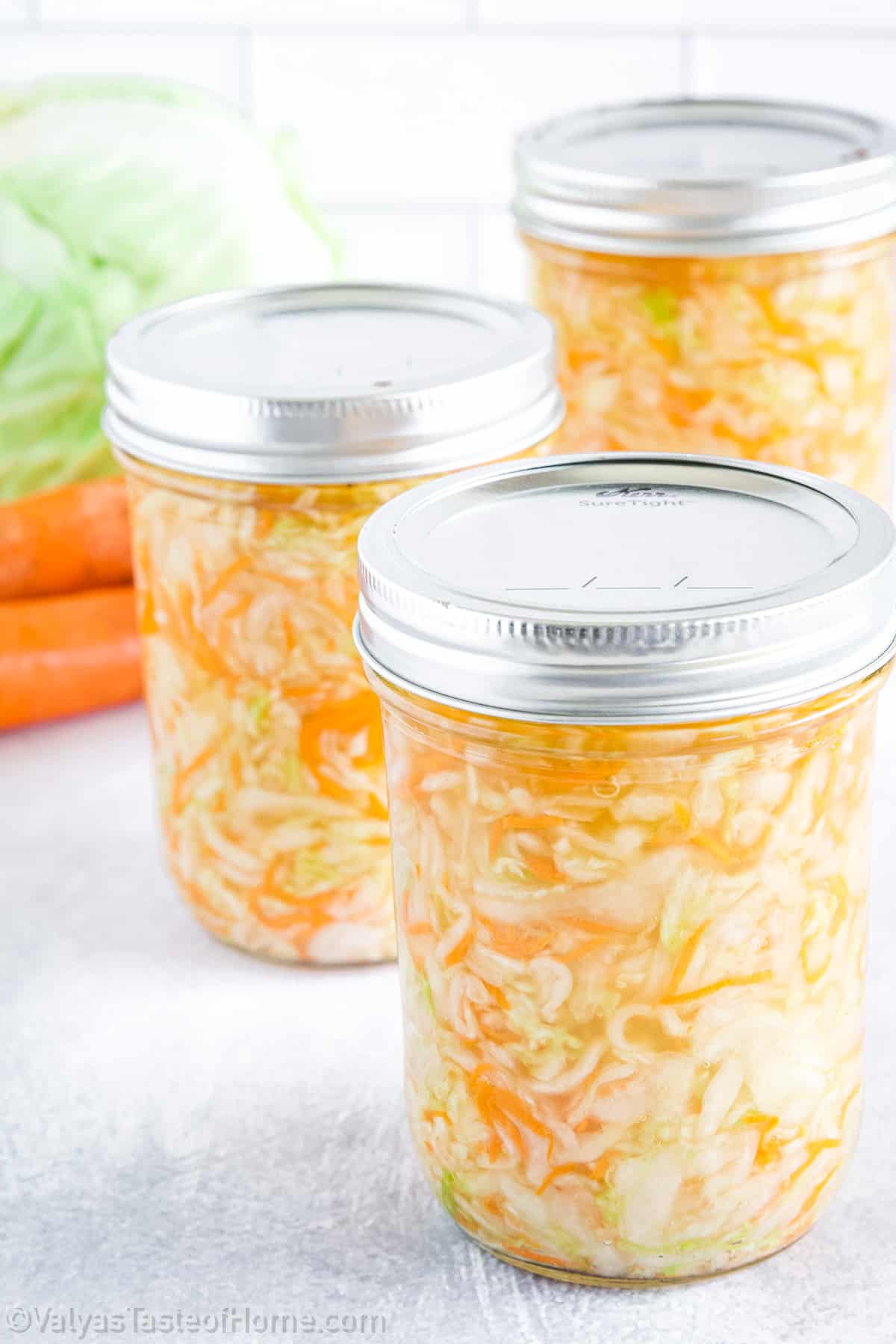
Now that your homemade sauerkraut is ready, enjoy it in a variety of dishes. It makes a great addition to salads or can be used as the main ingredient in sauerkraut borshch (kapusnyak). Enjoy the fruits of your labor and the delicious, tangy flavor of your homemade kraut.

Tips for Making the Best Sauerkraut Ever
Choosing the right cabbage: The first step to a great sauerkraut recipe is choosing the right cabbage. Green cabbage is often preferred for its firm texture and mild flavor. The heads should be tight and heavy for their size with crisp, fresh-looking outer leaves.
Shredding the cabbage: Shredding the cabbage finely is essential for the best sauerkraut. This not only helps in the fermentation process but also makes the sauerkraut easier to pack into jars. You can use a sharp knife or a shredder for this process.
Balancing the salt: The right amount of salt is crucial in this sauerkraut recipe. Too much salt slows down the fermentation process, while too little can lead to mold. The general rule is to use 2% of the weight of the cabbage in salt.
Packing the jars: When packing the sauerkraut into mason jars, make sure to press down firmly. This is to make sure the juices cover the vegetables entirely, creating an oxygen-free environment necessary for fermentation. Leave some space at the top of the jar to allow for expansion.
Patience is key: The fermentation process takes time, so patience is key. After packing the jars, let them sit at room temperature for 24 hours. Then, move them to the refrigerator for 3-4 days. Your homemade sauerkraut will be ready for consumption after a week.
Storing the sauerkraut: Proper storage is essential to keep your sauerkraut fresh. Once the fermentation process is complete, make sure that the jars are tightly sealed. Store the sauerkraut in the refrigerator to slow down the fermentation process and prolong its shelf life.
Serving Suggestions for Sauerkraut
Sauerkraut Salad: This is a simple yet delicious side dish that pairs well with any potato dish. Toss the sauerkraut with some thinly sliced onions, olive oil, and black pepper. The tangy flavor of the sauerkraut compliments the earthiness of the potatoes beautifully.
Kapusnyak (Sauerkraut Borscht): This traditional Ukrainian soup is a hearty and comforting dish that features our homemade sauerkraut. The tangy sauerkraut adds a unique flavor to the soup, making it a must-try recipe for cold winter nights.
Braised Cabbage with Sauerkraut: Add some of this sauerkraut to fresh cabbage when you’re making braised cabbage. The fermented flavor of sauerkraut imparts an extra depth of flavor to the cabbage, giving the dish a delicious twist.
Sauerkraut with Sausages: A classic pairing, sausages and kraut is a delightful combination. The richness of the sausages is balanced by the bright, tangy flavor of the sauerkraut. Serve it with some mustard and crusty bread for a satisfying meal.
Reuben Sandwich: Make your own Reuben sandwich at home using this homemade kraut. The combination of corned beef, Swiss cheese, sauerkraut, and Russian dressing between rye bread is a classic that never gets old.
Recipe Variation Ideas for Sauerkraut
This delicious sauerkraut recipe is absolutely perfect as is, but if you're looking to change things up, here are a few variation ideas you can try:
Garlic Kraut: For garlic lovers, this variation is a definite must-try. Simply add 5 cloves of minced garlic to the mixture, and let the fermentation process work its magic. The result will be a sauerkraut with a strong, aromatic garlic flavor that pairs perfectly with meat dishes.
Caraway and Juniper Kraut: This variation adds a unique flavor profile to your homemade kraut. Mix in a teaspoon each of caraway seeds and crushed juniper berries for a slightly sweet, aromatic, and fruity flavor that makes this fermented food stand out.
Spicy Kraut: If you’re a fan of heat, this variation is for you. Add a finely chopped jalapeno or serrano pepper to the cabbage and carrot mix. The heat from the pepper will infuse into the kraut, giving it a surprising kick that will excite your taste buds.
Frequently Asked Questions
How is sauerkraut fermented?
Sauerkraut is made through a pickling process known as lactic acid fermentation. Cabbage leaf contains beneficial bacteria that convert the cabbage's natural sugars into lactic acid. Lactic acid acts as a preservative and is very beneficial for our gut health.
Can I make sauerkraut without salt?
It is possible to make sauerkraut without salt but I don’t recommend it. Salt it a necessary ingredient when fermenting foods because of a number of reasons. It creates an environment that favors the formation of lactobacillus bacteria (good bacteria) and prevents unwanted bacteria and yeast from forming. Plus, it also helps improve flavor and prolong shelf-life.
How long should the sauerkraut sit before refrigeration?
Allow the sauerkraut to sit on the countertop for about 24 hours before placing it into the fridge for 3-4 days.
How should I store the sauerkraut?
Pack this fermented cabbage into mason jars, close tightly with lids, and store it in the refrigerator for a couple of months.
When is the sauerkraut ready for consumption?
The sauerkraut is ready for consumption after a week’s fermentation process in the refrigerator.
Can I use this sauerkraut recipe to make other dishes?
Yes, you can use this homemade sauerkraut to make salads or sauerkraut borshch (kapusnyak) or sauerkraut salad.
Can I use this sauerkraut recipe to make other dishes?
Yes, you can use this homemade kraut to make salads or sauerkraut borshch (kapusnyak).
How to Store Leftover Sauerkraut
To store leftovers in the fridge, use mason jars or any other airtight containers. Remember, the key to maintaining the quality of your kraut is to keep it oxygen-free.
Pack the sauerkraut into the jars tightly, pressing down to make sure that the juices, or brine, cover the vegetables. This keeps the mold at bay and allows the sauerkraut to remain fresh.
The stored sauerkraut can last up to 2 months in the fridge, with its flavor deepening over time.

Recipe Card
How to Make Sauerkraut at Home (Easy and Full of Probiotics)
Ingredients
Sauerkraut Ingredients
- 2 heads – medium size cabbage
- 2 large – carrots
- ¼ cup – sea salt
Instructions
How to Prep Veggies
- Begin by peeling the outer leaves from the green cabbage and setting them aside. These leaves can be used later in the fermentation process to create an oxygen-free environment.
- Next, peel your carrots using a standard potato or vegetable peeler. It is essential to wash all your vegetables thoroughly to remove any dirt or foreign particles.
- Cut the head of your cabbage in half. Using a shredder or a sharp knife, shred the cabbage into thin slices. Shredding increases the surface area of the cabbage, allowing the brine to penetrate more efficiently.
- Similarly, shred the carrots and add them to the bowl containing the shredded cabbage. The carrots add a pleasant sweetness to the sauerkraut and contribute to its overall flavor.
How to Make Sauerkraut
- Sprinkle the appropriate amount of sea salt onto your cabbage and carrot mixture. Sea salt acts as a preservative and kickstarts the fermentation process. It is important to toss the mixture well, to make sure that salt is evenly distributed. Massage the salt in using your hands, the end of a wooden spoon, or a kraut pounder.
- This step is crucial in creating the brine in which your kraut will ferment. Squeeze the vegetables together until the cabbage becomes limp and begins to release its juices.
- Transfer your sauerkraut into a bowl or crock that has a lid that seals tightly. Alternatively, you could use mason jars. Thoroughly pack them down with a wooden spoon. The goal is to eliminate as many air bubbles as possible.
- Let the sauerkraut sit on your countertop for approximately 24 hours. This allows the flavors to meld together and fermentation to begin. Your sauerkraut should ferment in an anaerobic environment that allows carbon dioxide to escape without letting oxygen in. An airlock or fermentation crock is useful as well.
How to Refrigerate Sauerkraut
- After the initial fermentation period, move your kraut to the refrigerator. Here, it should sit for 3-4 days. The cool temperature slows the fermentation process, allowing the flavors to develop further.
- Remove the sauerkraut from the refrigerator and pack it into jars. Make sure that the brine covers the cabbage to prevent mold.
- Close the jars tightly with lids and store them in the refrigerator. Your sauerkraut is safe to consume after just one week, but the flavor will continue to develop over several months.
Thank you for following me on Instagram, Facebook, and Pinterest!
This recipe was originally posted on November 2, 2015 (original picture below), and updated for a better user experience. The post may contain affiliate links. Read my disclosure.
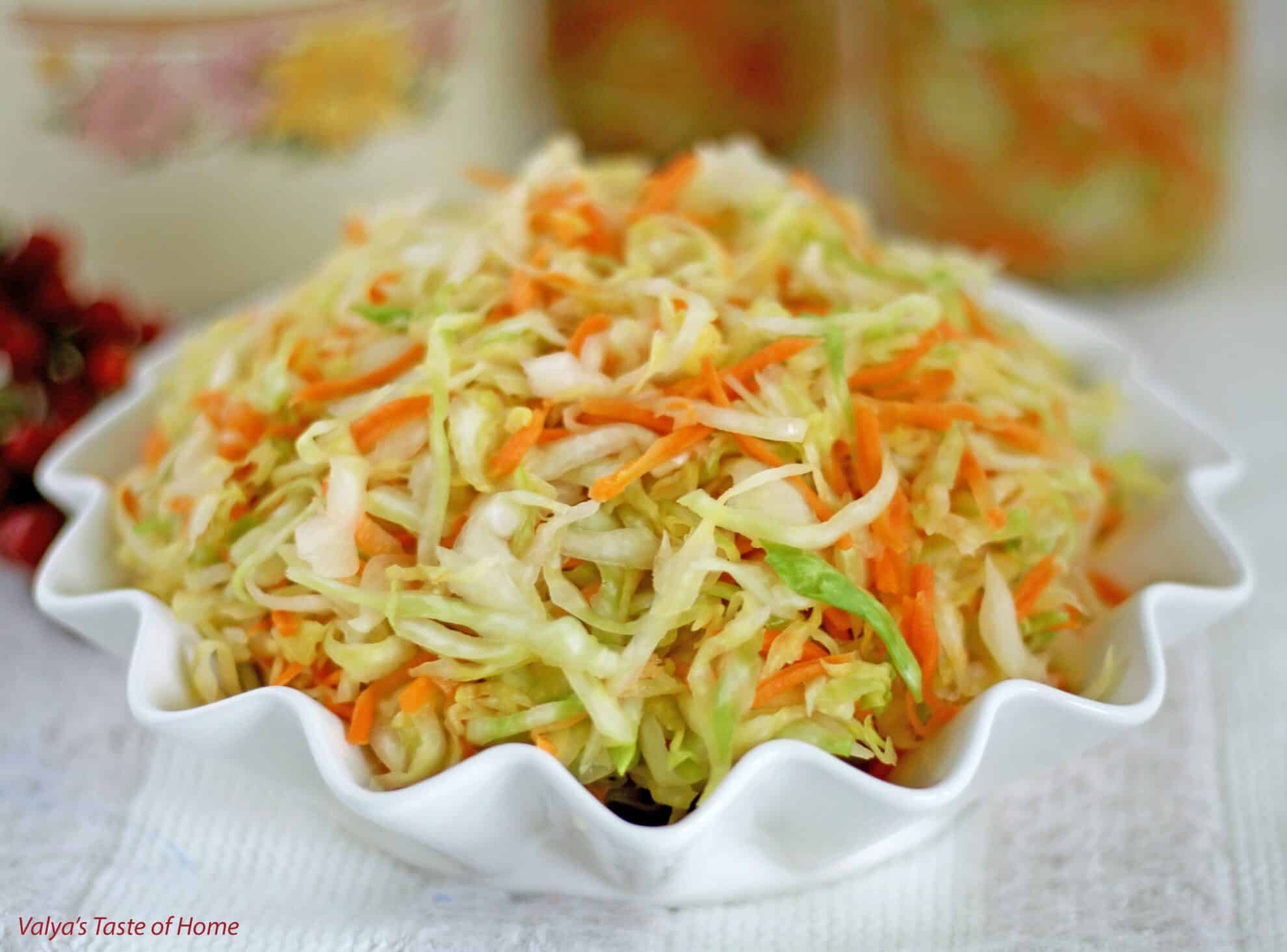



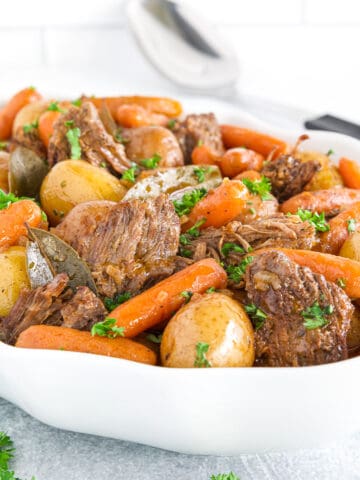
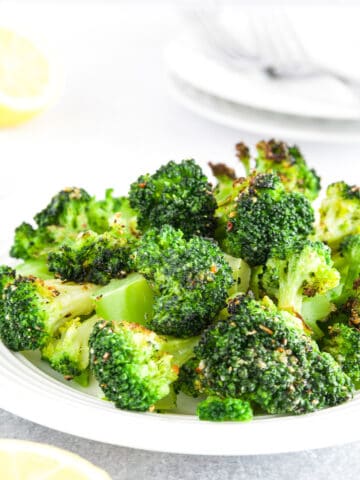



Lena A says
Can you eat this on 6th days once made or does it have to be one week??
Valya's Taste of Home says
On the 6th day is should be fermented enough. Thanks for asking!
Petro says
We used to make this years ago, for Ukrainian Christmas bazar, in large wooden brandy barrels. I couldn't remember the quantities or ratios, but yours sounds about right. We also added whole pepper corns. I loved smashing it down with a makohon (oversized wooden bat). An elderly lady would skim off bubbles daily, taste and adjust salt till it was ready for jarring. I'll try this recipe soon, with Canadian winter cabbage soon available.
Valya's Taste of Home says
I do remember my grandma used to do the same exact way. Thank you for sharing your experience with me and enjoy making this delicious Suerkraut!
Louise says
Hi Valya,
I'm researching how to make sauerkraut and ran across your 5 star recipe! When you bottle the sauerkraut do you put something between the metal lid and the vegetables? I'm curious because one website stated to make sure no metal touches the vegetables since various metals might be absorbed into the vegetables. What is your method and opinion about this?
Thank you, I look forward to trying your recipes!
Valya of Valya's Taste of Home says
No, I don't put anything in between the metal lid and the fermented vegetables. Don't fill the jars too full. Leave about one-inch space in between the lid and the veggies. Then you can top each jar off with the sauerkraut fermented juice. I hope this is helpful. I hope you like it as much as we do! Enjoy!
Stu says
What kind of salt? Regular table salt or kosher salt? There's a big difference in measurement.
Valya of Valya's Taste of Home says
I used regular iodized salt.
Cath says
Would this sauerkraut have the benefits derived from fermentation? Like kimchi or kombucha?
www.valyastasteofhome.com says
Similar. Each has it’s own benefits.
Cath says
Thank you.
www.valyastasteofhome.com says
You are more than welcome!
Raya Lycholit says
Once done, how long can it stay in the fridge before it goes bad? I am a One person household.
Can u email me the answer.
www.valyastasteofhome.com says
It can be stored in the fridge up to a month.
Raya Lycholit says
Thank U
www.valyastasteofhome.com says
You are more than welcome! 🙂
Zeli says
So with this recipe, do you need to add a weight on top of the cabbage?thanks for your response
www.valyastasteofhome.com says
Yes. I just place a flat large plate with a rock on top.
Kim Rinker says
I just returned from my first visit to Ukraine and am really excited to try a lot of the dishes I had! I did notice the sauerkraut did not have vinegar and I loved it.....had it at every meal! I was very happy to find your recipe and have just made it in Idaho! Thank you and I'll be looking forward to trying more of your recipes!
www.valyastasteofhome.com says
Hi Kim! Welcome to my website!!! You can add vinegar if you'd like. I prefer plain version of it. What part of Idaho?
Raya Lycholit says
Did u make it and how much vinegar did U add to this recipe
www.valyastasteofhome.com says
I do not add vinegar to the recipe.
Natasha says
Hi Valya!
I have a question about the salt you used to make your sauerkraut. The image of the salt on the above page shows Morton Brand Iodized salt. Do you get a good ferment using this salt? I thought Sea salt or Pickling/Canning salt without iodine or weird ingredients to keep salt flowing in humid weather, was what was supposed to be used. All the recipes I have strictly say not to use iodized table salt.. Your recipe is the same one my Babushka passed down to me. It's the perfect recipe! This reminds me it's time to get my water crock out again.. Or perhaps it's time to ferment some cauliflower made pink with beets! I'm contemplating fermenting some Brussel sprouts.. What do you think?
Also, I'm looking for your recipe for sauerkraut borsch (kapustnyak). Is it similar to Schi? My Babushka (from the area where the Ukraine is now) used to make a soup she called Solyanka, but she used sauerkraut, cabbage and pork or beef ribs as the meat for this soup... I'm trying to find a similar recipe for this, as I fear it may have gone to her grave with her....
www.valyastasteofhome.com says
Hi Natasha. I actually prefer using sea salt or Kosher salt to make sauerkraut. I didn't have any on hand at that time. Also, if you're planning to use up sauerkraut quickly then table salt is ok and iodized in it will not do any harm. Yes, it calls kapustnyak. I do not have it on my blog. I will put it on my to post list. You can add any kind of meat to this kapustnyak borshch. Schi soup is made out of fresh cabbage and grated carrots, sliced pepper, and tomatoes. But when sauerkraut is used it's called "Sour Schi"
Michelle says
Hi was wondering after the waiting period if it is safe to can it for shelf stablity.
www.valyastasteofhome.com says
No it's not safe. It will start spoiling in room temperature sitting on the shelf. It has to be stored in the fridge. I hope this helps.
Lana says
This recipe is so delicious!!! My first time trying and it was so successful and 100 times better than store bought. Definitely a keeper. Thanks Valya for another great recipe ?
www.valyastasteofhome.com says
I'm so glad to hear that you like the recipe. I totally agree, everything home made is best. I appreciate you sharing your experience with me. Thank you for making my recipes and sharing them with your loved ones. ?
Sauerkraut Billy says
This has to be one of the simplest and easiest recipes to follow on sauerkraut I've seen so far! What makes this Ukrainian? I can't wait to try this at home! Thanks for your recipe and your pictures!
valya'stasteofhome.com says
Hello dear! Good question! Here is a little history why this sauerkraut called "Ukrainian". This is my grandmas recipe who lived all of her life in Ukraine. Having watched and helped my mom make this homemade Sauerkraut, I learned how to make it as well. Since this recipe originated in Ukraine and came to the US with my parents, it earned and maintained the name "Ukrainian". Let me how you like it if you ever make it. Thank you for stopping by 🙂
Gordon says
" squeeze the vegetables together until the cabbage becomes limp and releases its juice."
Sorry for what is likely a really dumb question but, I've never done this before so I have to ask. Is the juice discarded after it has been released?
valya'stasteofhome.com says
No. Do not discard the juice. The sauerkraut needs to be in it's own juice entire time, it preserves better with out going bad quick. I only squeeze some juice out of the amount I will be using, the rest of the sauerkraut remains stored in it's own juice. I have this clarifies more. And don't feel bad about asking questions, any questions is great and others may have the same one. Thank you kindly for stopping by and commenting 🙂
GardenChef says
Hmmm... another new experiment for me, eh?! Thank you for sharing. Just pinned this.
valya'stasteofhome.com says
You are very welcome and thank you for pinning 🙂
Marina says
My MIL adds vinegar to her kraut, is there a reason you don't? Also, I thought fermented foods are supposed to breathe while standing out at room temperature, what happens to yours when you close it with a lid? I assume not much since you only leave it out for a day. And what do you mean by one day: 12 or 24 hours? Is one day enough for the bacteria to form? Sorry for asking so many questions, I have never made it myself, only watched other people make it. I definitely want to try your recipe though, thank you for sharing!
valya'stasteofhome.com says
Hi Marina. I've never herd of anyone putting vinegar into the sauerkraut. That would be interesting to test it. One day = 24 hrs. You don't have to close the lid tight, but that speeds up the fermenting process. I hope this helps. If you make it I would love to hear your feedback. Thanks for your comment. 🙂
Ro says
My Ukrainian father in law would never add vinegar to pickles or sauerkraut; he said that’s for business to speed the fermentation process. What I know is that lacto fermentation occurs w the juices from the vegetables.